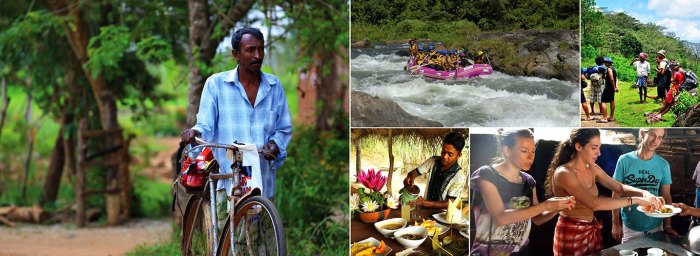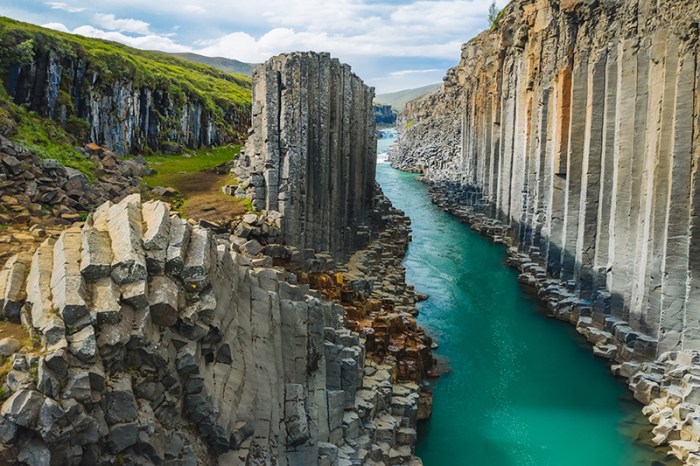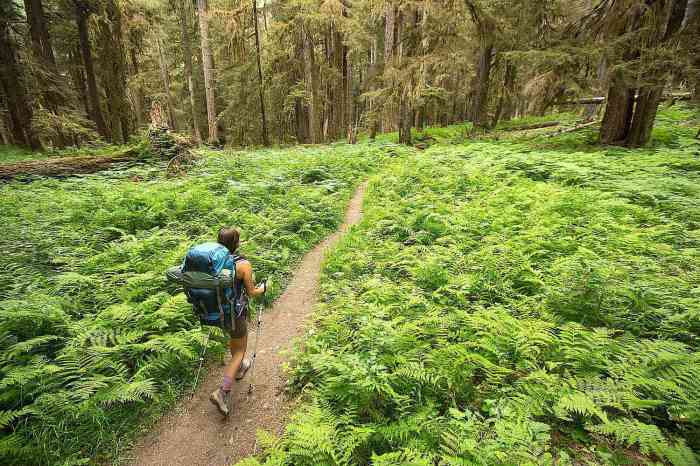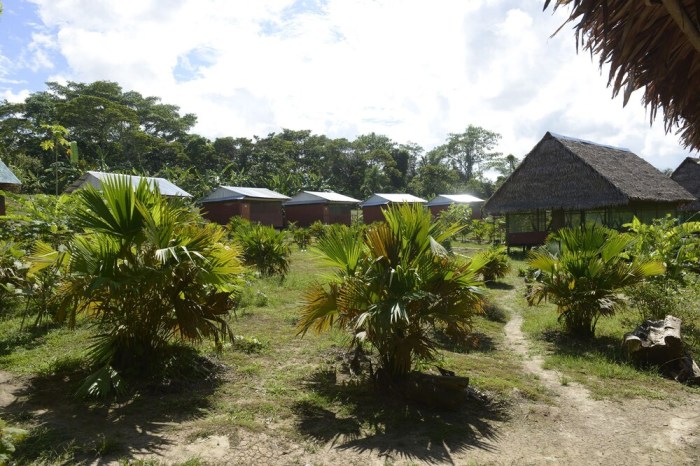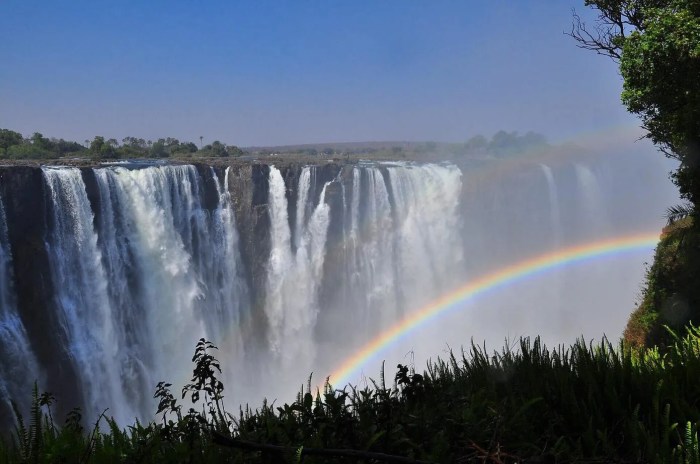Mangrove Tunnel Kayak Ecotour Adventure
Mangrove tunnel kayak ecotour offers a unique opportunity to explore the mesmerizing beauty of mangrove forests. This immersive experience takes you through intricate tunnels, showcasing the remarkable biodiversity of these coastal ecosystems. Expect a journey of discovery, combining thrilling kayaking with ecological awareness.
This ecotour delves into the fascinating world of mangrove forests, from their vital role in coastal protection to the unique species that call them home. You’ll learn about the rich history and cultural significance of these ecosystems, alongside practical kayaking techniques for navigating the complex waterways.
Introduction to Mangrove Tunnel Kayak Ecotours
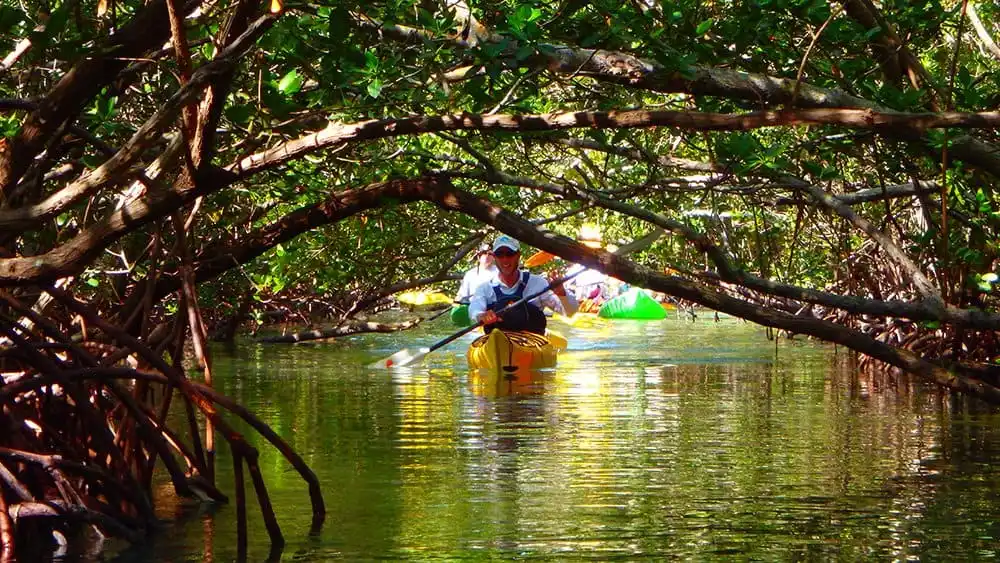
Mangrove tunnel kayak ecotours offer a unique and immersive way to experience the beauty and biodiversity of mangrove forests. These tours provide an up-close and personal encounter with these vital ecosystems, fostering a deeper appreciation for the natural world. Kayaking through the intricate network of waterways within the mangroves allows for unparalleled wildlife observation and a truly unforgettable experience.
These tours are particularly appealing due to their blend of adventure, nature appreciation, and conservation awareness. Participants can explore hidden channels, witness diverse flora and fauna, and gain valuable insights into the crucial ecological role mangroves play in coastal protection and biodiversity.
Definition of a Mangrove Tunnel Kayak Ecotour
A mangrove tunnel kayak ecotour is a guided tour that involves navigating through the intricate network of waterways within a mangrove forest using a kayak. These tours are specifically designed to provide an engaging and informative experience of the mangrove ecosystem, fostering appreciation for its ecological importance.
Typical Duration and Itinerary
The typical duration of a mangrove tunnel kayak ecotour ranges from a few hours to a full day. Itineraries often begin with a briefing on safety procedures, environmental awareness, and the local flora and fauna. Kayaking through the mangrove channels typically follows, allowing for close-up observations of diverse plant life, bird species, and other wildlife. The tour might also include a stop at a designated observation point for a more comprehensive understanding of the ecosystem. Post-tour debriefings often include information on the ecological significance of mangroves and ways to support their conservation.
Essential Equipment for a Safe and Enjoyable Experience
A safe and enjoyable mangrove tunnel kayak ecotour relies on appropriate equipment. Essential gear includes a stable and seaworthy kayak, a life vest (with proper fitting and maintenance checks), a paddle, and a water-resistant backpack for carrying personal belongings. A waterproof camera or binoculars can greatly enhance the experience by allowing participants to capture and observe wildlife more closely. The tour operator will usually provide a guide who possesses local expertise and knowledge. The guide is essential for navigating safely through the mangrove channels and providing information about the local ecosystem. Furthermore, appropriate footwear and clothing for the conditions (weather, water temperature) are crucial for comfort and safety. Consider weather forecasts before heading out and ensure the equipment is in proper working condition before commencing the tour. This proactive approach helps ensure a safe and memorable experience for all participants.
Sample Itinerary Example
| Time | Activity |
|---|---|
| 9:00 AM | Arrival and Briefing |
| 9:30 AM | Kayaking through mangrove tunnels |
| 11:00 AM | Wildlife Observation |
| 12:00 PM | Lunch break (optional) |
| 1:00 PM | Return and De-briefing |
Environmental Aspects of Mangrove Ecosystems: Mangrove Tunnel Kayak Ecotour
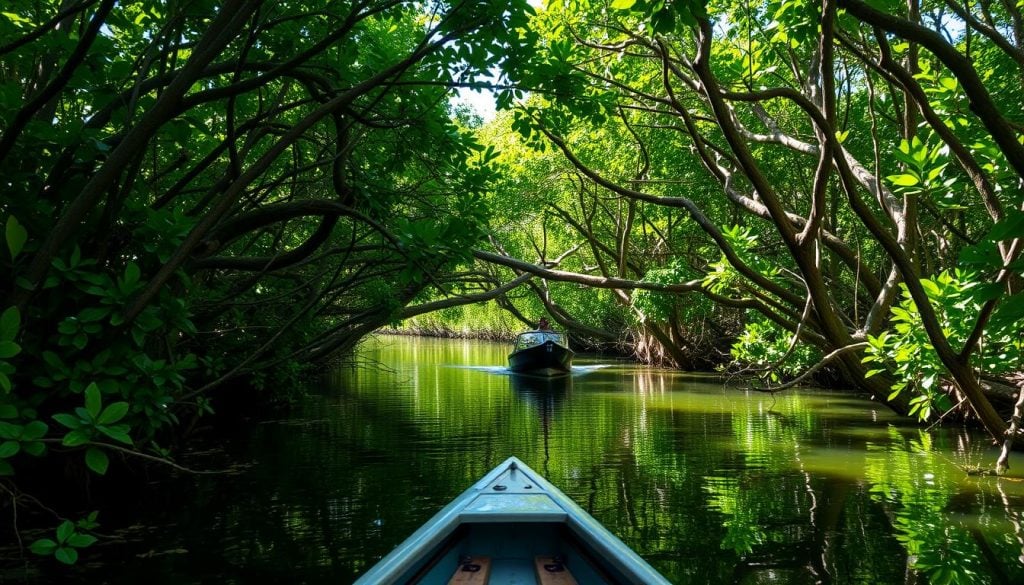
Mangrove forests, often overlooked, play a crucial role in coastal ecosystems. These unique and vital habitats provide a complex web of ecological benefits, supporting a diverse array of life and acting as a natural buffer against coastal erosion. Their importance extends beyond their immediate surroundings, influencing the health and resilience of entire coastal regions.
These intricate ecosystems are characterized by their tolerance to saltwater and their ability to thrive in intertidal zones. This resilience to challenging conditions makes them a critical component of coastal landscapes, providing numerous ecological services.
Ecological Importance of Mangrove Forests
Mangrove forests are remarkably productive ecosystems. They support a wide range of species, serving as nurseries for many commercially important fish and shellfish. This nursery function is crucial for maintaining healthy fish populations, as mangroves provide safe havens for juvenile fish and invertebrates to grow and develop before migrating to adult habitats. Their intricate root systems also create complex habitats for a variety of invertebrates, including crabs, shrimps, and oysters.
Role of Mangroves in Coastal Protection
Mangroves act as a natural barrier against coastal erosion and storm surges. Their dense root systems effectively dissipate wave energy, reducing the impact of storms on shorelines. This protective function safeguards coastal communities and infrastructure from damage caused by extreme weather events. This is a vital service that mangroves provide, often mitigating damage that could cost communities millions in infrastructure repairs.
Impact of Human Activities on Mangrove Ecosystems
Human activities, including deforestation, pollution, and coastal development, pose significant threats to mangrove ecosystems. Deforestation for agriculture or aquaculture reduces the natural protection against coastal erosion and degrades biodiversity. Pollution from industrial and agricultural runoff contaminates the water, harming the organisms that inhabit the mangroves. Coastal development encroaches upon mangrove habitats, reducing their extent and altering their ecological functions. The loss of mangrove habitat is a significant environmental issue, with devastating consequences for local ecosystems and communities.
Conservation Efforts to Protect Mangrove Forests
Conservation efforts are crucial to safeguarding these vital ecosystems. Restoring degraded mangrove areas, promoting sustainable land-use practices, and controlling pollution are essential steps in ensuring the long-term health of mangrove forests. Community involvement is key to successful conservation programs, as local knowledge and participation are vital for effective management strategies. International cooperation and policy changes are also necessary to address the threats posed by unsustainable practices.
Comparison of Mangrove Species
| Species | Location Suitability for Tours | Key Characteristics |
|---|---|---|
| Rhizophora mangle (Red Mangrove) | Common in the tropics and subtropics. Suitable for tours where these are prevalent. | Known for its distinctive stilt roots, which help it stabilize in shallow, muddy waters. Tolerates a wide range of salinity. |
| Avicennia germinans (Black Mangrove) | Found in tropical and subtropical areas, particularly in areas with higher salinity. | Recognizable by its pneumatophores (breathing roots), which extend above the waterline. Tolerates high salinity levels better than other species. |
| Laguncularia racemosa (White Mangrove) | Widely distributed in the tropics and subtropics. Suitable for tours in areas with these species. | Characterized by its prop roots and tolerance to variations in water salinity. |
Different mangrove species have specific tolerances for salinity, water depth, and sediment type. Understanding these differences helps in selecting appropriate tour locations and appreciating the diverse adaptations of these vital ecosystems.
Kayaking Techniques and Safety
Navigating mangrove tunnels requires specific kayaking techniques and a heightened awareness of safety precautions. These intricate waterways present unique challenges that demand careful consideration of paddling strategies and potential hazards. This section details the crucial aspects of kayaking in mangrove environments, from paddling techniques to emergency procedures.
Essential Kayaking Techniques for Mangrove Tunnels
Proper paddling techniques are paramount for maneuvering through the narrow, often unpredictable channels of mangrove tunnels. Maintaining a stable and controlled kayak is essential for both efficiency and safety. Effective use of the paddle, particularly in confined spaces, will significantly improve maneuverability.
- Paddle Placement and Stroke: Positioning the paddle correctly and employing effective strokes, such as draw strokes and sweep strokes, are critical. In tight spaces, shorter, more controlled strokes are preferable to long, sweeping ones, as they allow for precise adjustments and avoid collisions with the surrounding vegetation. Proper body positioning is equally crucial to maintaining balance and stability.
- Turning and Maneuvering: Learning to turn and maneuver the kayak within the confined spaces of the mangrove tunnel is essential. Practice using your paddle to execute controlled turns and maintain stability while navigating tight turns and bends.
Paddling Techniques in Varied Water Conditions
Different paddling techniques are necessary depending on the water conditions. Skillful adjustment is essential to maintain control and safety in calm or challenging waters.
- Calm Waters: In calm conditions, focus on maintaining a consistent pace and rhythm, utilizing smooth, steady strokes. This minimizes fatigue and allows for greater awareness of the surrounding environment. Efficiency is key to maximizing the experience.
- Challenging Waters: In challenging waters, such as those with strong currents or uneven surfaces, adjust paddling technique to compensate for these conditions. Stronger strokes and strategic positioning of the kayak are necessary for stability and progress. Learning to read the water is essential for effective paddling in these conditions.
Safety Precautions in Mangrove Environments
Kayaking in mangrove ecosystems necessitates awareness of potential hazards and proactive safety measures. Recognizing and mitigating risks is essential to a safe and enjoyable experience.
- Navigating Vegetation: Mangrove tunnels are often filled with dense vegetation. Careful navigation, maintaining a slow pace, and being aware of potential obstacles are crucial. Look for gaps and openings in the vegetation to avoid collisions.
- Avoiding Entanglement: Kayakers should be aware of potential entanglement with mangrove roots and other submerged obstacles. Keeping a safe distance and employing appropriate paddling techniques are vital to prevent entanglement.
Emergency Procedures During Tours
Having a plan for emergencies is crucial for any tour. Preparation and quick action can mitigate risks and ensure the safety of all participants.
- Communication: Clear communication with the tour guide is essential. Familiarize yourself with the communication protocols and procedures for reporting incidents.
- First Aid and Rescue: Knowing basic first aid techniques and having readily available supplies can be crucial in emergencies. Understanding the tour’s emergency response protocols is critical.
Kayaking Skill Levels and Suitability
Different kayaking skill levels have varying suitability for mangrove tunnel tours. This table provides a general guideline for evaluating participant readiness.
| Skill Level | Description | Suitability for Mangrove Tunnel Tours |
|---|---|---|
| Beginner | Limited experience with kayaking in calm waters. | Potentially suitable with an experienced guide and appropriate training. |
| Intermediate | Experienced in various water conditions, including calm and some moderate currents. | Generally suitable with appropriate guidance. |
| Advanced | Confident in navigating complex water environments and handling challenging conditions. | Highly suitable and often preferred. |
Cultural and Historical Significance
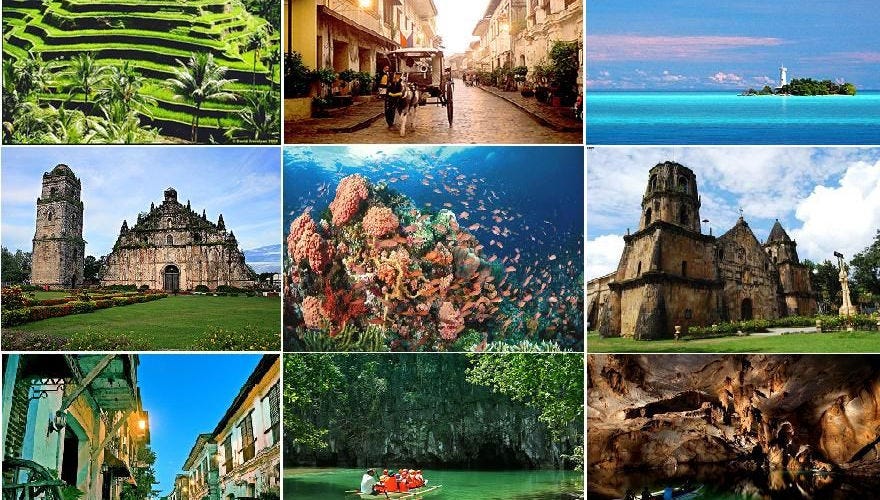
Mangrove ecosystems hold immense cultural and historical value for numerous communities worldwide. Their vital role in providing resources, shaping livelihoods, and influencing traditional practices has been deeply intertwined with human history. Understanding this connection is crucial for appreciating the importance of these ecosystems and fostering sustainable management strategies.
Cultural Significance in Diverse Regions
Mangroves play significant roles in various cultures globally. In coastal communities, they often symbolize resilience and abundance, representing a connection to the sea and its resources. For instance, in Southeast Asia, mangroves are frequently associated with spiritual beliefs and traditional ceremonies. These ecosystems provide a critical habitat for many species, and the intricate web of life within them is often interwoven into cultural narratives and stories.
Historical Role in Local Communities
Historically, mangroves have served as a vital source of sustenance and livelihood for many coastal communities. They provide timber for construction, firewood for cooking, and materials for various crafts. The gathering of shellfish, fish, and other marine life within and around mangrove forests has often been a primary source of food and income. These activities have been integral to the sustenance of coastal populations for centuries.
Indigenous Knowledge and Practices
Indigenous communities often possess extensive knowledge about mangrove ecosystems. They have developed intricate systems of sustainable harvesting and resource management, passed down through generations. This traditional ecological knowledge encompasses understanding the best times for harvesting, the various species present, and the importance of maintaining the ecosystem’s health. Their practices often involve respecting the rhythms of nature and maintaining a harmonious relationship with the environment. This traditional wisdom provides invaluable insights into sustainable management strategies.
Table: Historical Accounts of Mangrove Use
| Culture/Region | Historical Use | Examples |
|---|---|---|
| Southeast Asia (e.g., Indonesia, Philippines) | Food source (fish, shellfish), timber, construction materials, medicinal uses, and spiritual significance. | Traditional fishing practices, ceremonies involving mangrove plants, use of mangrove wood for houses. |
| West Africa (e.g., Nigeria, Ghana) | Coastal protection, food source (fish, shellfish), fuelwood, construction, and traditional medicine. | Use of mangrove poles in building houses, collecting oysters, and the use of mangrove extracts in traditional medicine. |
| Coastal Communities in Latin America | Timber for construction, firewood, and various crafts. Coastal protection and resource gathering. | Construction of houses using mangrove wood, collection of shellfish, and other marine resources. |
Note: This table provides a simplified overview. The specific uses and knowledge systems vary considerably across different communities and regions.
Ecotourism and Sustainable Practices
Responsible ecotourism prioritizes minimizing negative impacts on the environment, supporting local communities, and fostering cultural understanding. It recognizes the intrinsic value of natural areas and seeks to preserve them for future generations. This approach is crucial for the long-term health of both the ecosystem and the tourism industry.
Kayak tours in mangrove ecosystems offer a unique opportunity to experience the beauty of these vital environments while practicing sustainable tourism. Careful planning and execution are essential to ensure that the enjoyment of these tours does not compromise the integrity of the mangroves.
Principles of Responsible Ecotourism
Ecotourism operates on several key principles. These principles are not just theoretical concepts; they form the foundation for creating a positive and lasting impact on the environment and local communities. By adhering to these principles, tour operators can ensure the continued viability of the ecosystems and the satisfaction of their visitors. The principles guide tour operators in making choices that benefit the environment, the local communities, and the visitors.
Kayak Tour Contributions to Sustainable Tourism
Mangrove kayak tours can significantly contribute to sustainable tourism by engaging in environmentally conscious practices. By incorporating responsible actions into their operations, tour operators can reduce their environmental footprint and ensure the longevity of the mangrove ecosystems. This approach is not just a trend but a necessary component for ensuring the continued health of the ecosystem.
Minimizing Environmental Impact
Minimizing environmental impact is paramount during a mangrove kayak tour. This includes adhering to strict guidelines to reduce pollution, disturbance, and resource consumption. Strict adherence to these guidelines is essential for the health and preservation of the fragile mangrove ecosystem.
- Minimizing Noise Pollution: Using quiet kayaks and avoiding excessive noise during navigation minimizes disturbance to the local wildlife, including birds, fish, and other creatures that call the mangroves home. This quiet operation is crucial to the tranquility and health of the ecosystem.
- Waste Management: Implementing strict waste management protocols is critical. This includes carrying out all trash and recyclables back to shore, minimizing single-use plastics, and utilizing eco-friendly alternatives where possible. This conscientious approach is necessary to maintain the pristine nature of the mangroves.
- Respecting Wildlife: Observing wildlife from a safe distance and refraining from disturbing or feeding them is crucial. This ensures the preservation of the natural behaviours of the animals and maintains the integrity of their habitats. It also allows for an authentic experience of the ecosystem’s biodiversity for visitors.
Eco-Friendly Practices for Tour Operators
Tour operators can adopt numerous eco-friendly practices to minimize their impact on the mangrove ecosystem. Implementing these practices not only safeguards the environment but also creates a more enriching experience for visitors.
- Employing Local Guides: Hiring local guides provides valuable insights into the ecosystem’s ecology, history, and culture. This also supports local economies and fosters cultural exchange.
- Promoting Sustainable Transportation: Utilizing eco-friendly transportation methods, such as electric boats or kayaks, for the movement of participants and equipment, minimizes the carbon footprint of the tours.
- Partnering with Local Communities: Collaborating with local communities can provide support for conservation efforts, create employment opportunities, and promote cultural understanding.
Sustainable Practices in Mangrove Kayak Tours
| Practice | Description | Benefits |
|---|---|---|
| Waste Reduction | Minimize single-use plastics, carry out all trash, and utilize recycling options. | Preserves the pristine environment and reduces pollution. |
| Wildlife Observation | Observe wildlife from a distance, do not feed or disturb animals. | Preserves the natural behavior of wildlife and avoids harming them. |
| Quiet Operations | Use quiet kayaks and avoid excessive noise. | Minimizes disturbance to local wildlife. |
| Local Guides | Employ local guides with knowledge of the ecosystem. | Provides valuable insights, supports local economies, and fosters cultural exchange. |
| Sustainable Transportation | Utilize eco-friendly transportation methods. | Minimizes the carbon footprint of the tours. |
Tour Operator Profiles
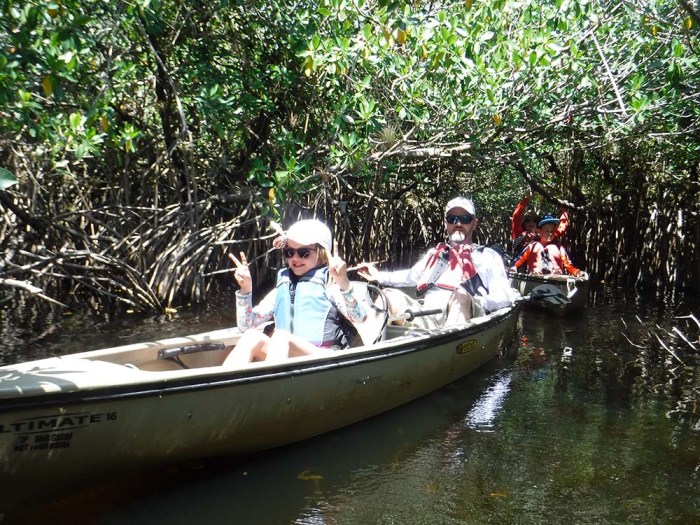
Source: evergladeskayaking.com
Discovering the intricate beauty of mangrove tunnels requires a knowledgeable and responsible tour operator. These operators act as stewards of the environment, ensuring visitor safety and providing a memorable experience while respecting the delicate ecosystem. A well-structured tour operator profile highlights the commitment to sustainability and the expertise of the guiding team.
A Profile of a Successful Mangrove Tunnel Kayak Tour Operator
“EcoKayaks Adventures” is a prime example of a successful mangrove tunnel kayak tour operator. Their commitment to environmental conservation and responsible tourism sets them apart. EcoKayaks prioritizes small group tours, limiting environmental impact and enhancing the visitor experience. Experienced kayak guides lead each tour, providing safety briefings and insights into the unique flora and fauna of the mangrove ecosystem.
Services and Offerings
EcoKayaks offers a range of guided mangrove tunnel kayak tours tailored to various interests and experience levels. These tours include:
- Beginner-Friendly Tours: Designed for first-time kayakers, these tours focus on mastering basic kayaking techniques while exploring shallow mangrove channels. Guides provide personalized instruction and support.
- Advanced Tours: Catering to experienced kayakers, these tours delve deeper into the mangrove tunnels, offering opportunities to encounter more diverse wildlife and explore less accessible areas.
- Sunset Tours: These tours combine the thrill of kayaking with the captivating beauty of a mangrove sunset, offering unique photographic opportunities.
- Educational Tours: These tours are specifically crafted to educate visitors about the ecological importance of mangroves, their biodiversity, and the cultural significance of these ecosystems.
Booking Process and Pricing Structure
EcoKayaks employs a user-friendly online booking system, allowing potential customers to browse tour options, select dates and times, and make secure payments. Pricing varies based on tour type, duration, and the number of participants. A detailed breakdown of pricing is available on their website. For example, a beginner tour for two people might cost $150 for a 3-hour experience.
Importance of Tour Operator Certifications and Qualifications
Tour operator certifications and qualifications are crucial for ensuring visitor safety and upholding environmental standards. Certifications demonstrate adherence to established safety protocols, environmental regulations, and best practices in ecotourism. Qualified guides possess the necessary skills to navigate challenging conditions and provide comprehensive information about the area, enhancing the educational value of the tour. Furthermore, certifications ensure the operator is adhering to the ethical conduct expected of ecotourism.
Comparison of Different Tour Operators’ Offerings
The table below provides a comparative overview of various mangrove tunnel kayak tour operators, highlighting their key offerings.
| Tour Operator | Tour Type | Duration | Price (USD) | Certifications |
|---|---|---|---|---|
| EcoKayaks Adventures | Beginner, Advanced, Sunset | 3-6 hours | $100-$250 | Certified Kayak Instructor, Environmental Stewardship |
| Mangrove Explorers | Standard | 4 hours | $120 | Certified Guide, Conservation Partner |
| Coastal Kayaks | Family, Couples | 2-4 hours | $150-$200 | First Aid & CPR Certified, Certified Eco-Guide |
Guest Experiences and Testimonials
Many participants have expressed profound appreciation for the mangrove tunnel kayak tours, highlighting the unique and memorable experiences they’ve had. These tours offer a profound connection with nature, fostering a sense of wonder and appreciation for the delicate ecosystem. Positive feedback underscores the importance of these tours in promoting environmental awareness and conservation efforts.
Memorable Moments and Insights
Participants often describe the breathtaking beauty of the mangrove forests as a highlight. The serene atmosphere, the tranquil sounds of nature, and the opportunity to witness diverse wildlife create lasting impressions. Kayaking through the intricate network of mangrove tunnels provides a unique perspective, showcasing the intricate beauty and ecological importance of these ecosystems. Many guests have commented on the sense of tranquility and wonder that permeates the experience, creating an atmosphere conducive to reflection and appreciation. The opportunity to witness local flora and fauna, from colourful birds to elusive creatures, is frequently cited as a key takeaway.
Emotional Connection with Nature, Mangrove tunnel kayak ecotour
These tours foster a deep emotional connection with nature, often leading to a renewed appreciation for the environment. The sense of tranquility and immersion in the natural world inspires participants to adopt more sustainable practices and to advocate for conservation. Many participants report feeling a profound sense of peace and awe, reflecting on the interconnectedness of life and the fragility of these ecosystems. This profound connection extends beyond the tour itself, inspiring individuals to engage more actively in environmental stewardship.
Guest Testimonial Summary
| Guest Name | Key Experience | Emotional Response |
|---|---|---|
| Amelia Rodriguez | The intricate network of mangrove tunnels was captivating. Seeing the diverse wildlife, especially the colourful kingfishers, was a highlight. | A profound sense of peace and awe. It made me want to protect these fragile ecosystems. |
| Benjamin Lee | The quiet beauty of the mangroves was humbling. The way the sunlight filtered through the canopy was truly magical. | A sense of wonder and serenity. I felt a strong connection to nature that I hadn’t experienced before. |
| Chloe Davis | Kayaking through the tunnels was an unforgettable experience. The sense of adventure was combined with a profound appreciation for the natural world. | A renewed appreciation for the beauty of nature and a commitment to conservation. |
| David Wilson | The diverse birdlife and the gentle sounds of the mangrove forest were incredible. It was like stepping into another world. | A sense of tranquility and profound wonder. It was a journey of self-discovery and connection with nature. |
Visual Representation of Mangrove Tunnels
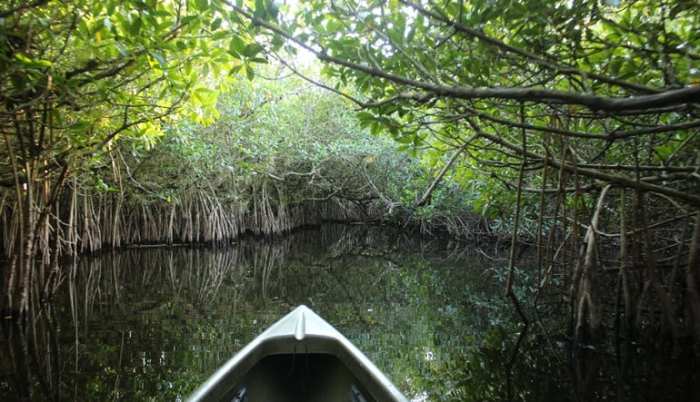
Source: cloudinary.com
Kayaking through mangrove tunnels offers a unique and immersive experience, blending natural beauty with a sense of wonder. The dense canopy of intertwining roots and the quiet stillness of the waterways create a captivating atmosphere, perfect for observing the diverse wildlife and appreciating the intricate ecosystem.
The visual experience is profoundly rich, characterized by the interplay of light and shadow filtering through the dense foliage. The interplay of sunlight and shade creates a mesmerizing effect, casting dappled patterns on the water’s surface.
Visual Characteristics of Mangrove Tunnels
The visual experience of navigating a mangrove tunnel is dominated by the interplay of light and shadow filtering through the dense, verdant canopy. The overhead foliage often forms a natural tunnel, creating an atmospheric effect that enhances the sense of exploration and discovery. The intricate network of roots, often extending from the water’s edge to the canopy, provides a rich tapestry of textures and colors. The interplay of light and shade across the water’s surface adds depth and dimension to the surroundings. The varying shades of green from the lush vegetation, coupled with the occasional glimpses of sunlight, paint a vibrant picture of the ecosystem.
Soundscapes of Mangrove Tunnels
The soundscape of a mangrove tunnel is as captivating as its visual aspect. The gentle lapping of water against the roots, the rustling of leaves in the breeze, and the occasional calls of birds and other wildlife create a harmonious symphony. The sounds vary depending on the time of day and the season. These auditory elements contribute to the overall ambiance, creating a unique sense of serenity and tranquility. The soundscape enhances the immersive experience, providing a rich auditory backdrop to the visual spectacle.
Flora and Fauna of Mangrove Tunnels
Mangrove tunnels are teeming with life, supporting a diverse array of flora and fauna. Various species of birds, including kingfishers, herons, and egrets, frequently utilize the mangroves for nesting and foraging. Reptiles like monitor lizards and snakes, along with various amphibians, find refuge and sustenance within the complex root systems. Fish, crustaceans, and invertebrates thrive in the shallow waters, providing sustenance and a captivating glimpse into the underwater world. The presence of these species is a testament to the ecological importance of mangrove ecosystems.
The Intricate Network of Roots and Waterways
The network of roots and waterways within a mangrove tunnel is a marvel of natural engineering. The roots, often extending horizontally from the tree trunks, form a dense labyrinth of pathways and channels. These interconnected roots create a complex network of waterways that allow water to flow through the system. The roots also provide essential support for the mangrove trees, enabling them to withstand the forces of wind and waves. The interconnected waterways, often only a few inches deep, provide habitats for numerous species, showcasing the intricate balance of nature.
Types of Mangrove Tunnels
| Type of Mangrove Tunnel | Characteristics |
|---|---|
| Dense Canopy Tunnel | Characterized by a dense network of roots and foliage that creates a complete canopy over the water, limiting sunlight penetration and resulting in a shaded, often humid atmosphere. |
| Open Canopy Tunnel | Feature a more open structure, with gaps in the canopy allowing for more sunlight to reach the water’s surface, providing more visibility and a brighter environment. |
| Root-Labyrinth Tunnel | Marked by a complex network of aerial roots that intertwine and create a maze-like effect, offering both visual interest and challenges to navigate. |
The table above illustrates the varying characteristics of mangrove tunnels, highlighting the diversity found within these unique ecosystems. Each type of tunnel presents a different experience for kayakers, offering a range of visual and sensory experiences.
Epilogue
In conclusion, a mangrove tunnel kayak ecotour provides a memorable and enriching experience. It combines thrilling kayaking adventures with a deeper understanding of the ecological importance of mangrove forests and the cultural significance they hold. This tour promotes responsible ecotourism, allowing visitors to appreciate these vital ecosystems while minimizing their impact. The detailed exploration of kayaking techniques, safety precautions, and the diverse experiences of previous visitors will leave a lasting impression on those seeking a memorable adventure.
